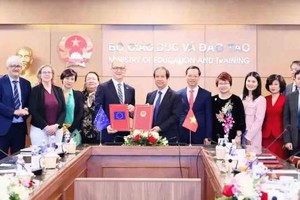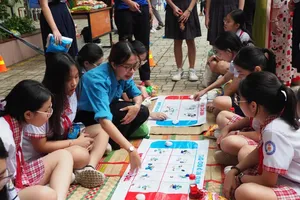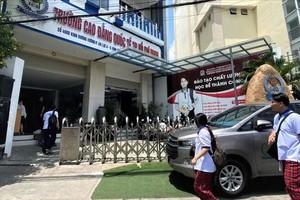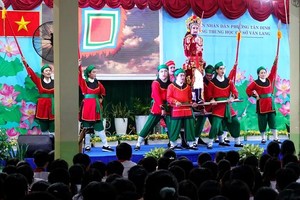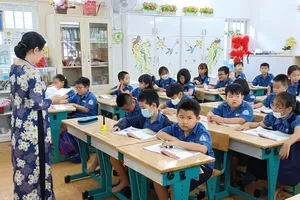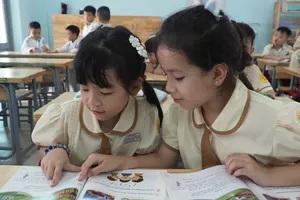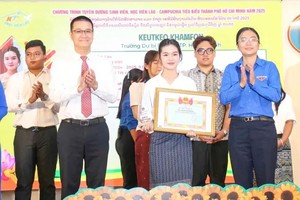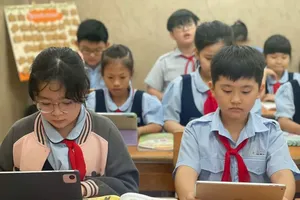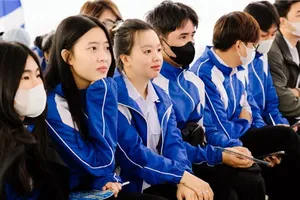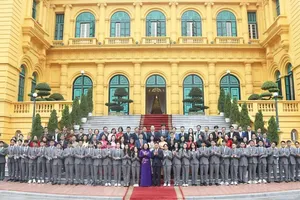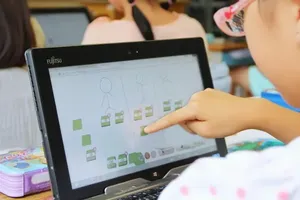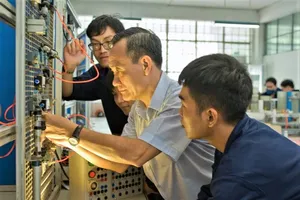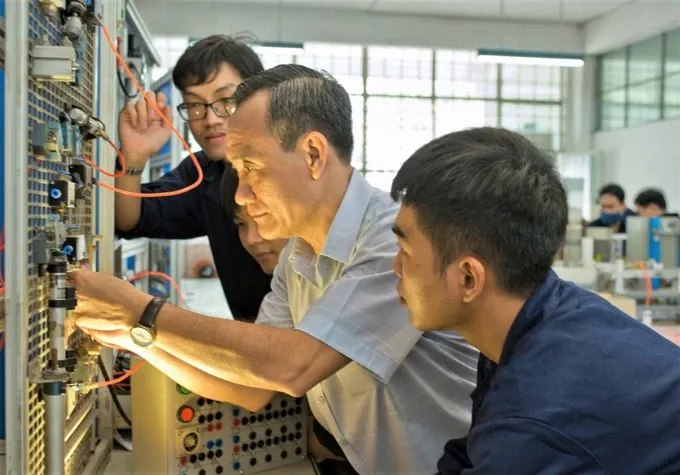
In the immediate aftermath of Southern Vietnam’s liberation and national reunification, a significant portion of its populace grappled with illiteracy. Recognizing this critical challenge, the Party Central Committee issued Directive No. 221-CT/TW on June 17, 1975, prioritizing the “eradication of illiteracy and the provision of supplementary education as the paramount and most urgent task”.
By the close of February 1978, a mere three years later, 21 provinces and cities across the South had fundamentally achieved their illiteracy eradication targets, a testament to the nation’s resolute commitment.
Forging ahead amidst adversity
Reflecting on her early time at HCMC University of Technology (Vietnam National University - Ho Chi Minh City), Assoc Prof Dr Phan Thi Tuoi, its former President, recounts: “Having completed my university studies in Czechoslovakia (now the Czech Republic), I made the conscious decision to return and serve my country in 1977, fully aware of the prevailing difficulties and shortages. At that time, Computer Science was merely a nascent discipline within the Faculty of Electrical and Electronic Engineering.”
With limited enrollment figures, a mere handful of antiquated computers, and outdated educational facilities, students at that time had to endure day-long waits for access to the computer lab for practical exercises. Facing similar shortages, yet driven by an indomitable spirit and a shared ideological conviction, Assoc Prof Dr Tuoi, alongside numerous other faculty members, including those who had served under the previous regime, transcended these formidable obstacles, dedicating themselves to the vital task of rebuilding and developing HCMC in the post-liberation era.
She then pursued her doctorate in Computer Science in Czechoslovakia (1981-1984), before returning to establish the Computer Science and Engineering Faculty by 1990. As a visionary leader, she became the university’s first female president in 1998, driving its significant development until 2007.
The university’s Robocon team garnered national acclaim with three championship wins against formidable Asian rivals. Simultaneously, significant upgrades enhanced infrastructure, key research labs, and teaching faculty quality. Under her guidance, the university’s Computer Science and Engineering discipline became Vietnam’s first ABET-accredited programs, alongside collaborations with French and Japanese institutions.
All remarkable achievements of the university would not have been possible without the unwavering support of the municipal authorities and leadership at all levels. The university’s student dormitory in District 10 stands as a prime example, being the inaugural project to receive a substantial stimulus loan of over VND100 billion (US$3.87 million) from the HCMC People’s Committee, offered interest-free.
Generations of the university’s alumni have gone on to hold pivotal roles across various levels of government, from the central administration to HCMC as well as the southern provinces and cities. Notably, the university’s engineers and graduates have made invaluable contributions to the city’s numerous infrastructure projects and continue to meet the evolving demands of businesses within HCMC and the broader southern region.
Sharing a similar experience is Dr Nguyen Tien Dung, former Head of the Admissions and Student Affairs Office under HCMC University of Technology and Education. With 42 years of dedication to the university, he considers the growth of his university as a transformation dream.
In 1976, the entire university comprised a mere 300-400 students; today, its scale has expanded exponentially by hundreds of times. In the post-liberation time, HCMC University of Technology and HCMC University of Technology and Education stood as the primary educational institutions of technical expertise. The university’s acquisition of land use rights was significantly facilitated by the keen attention of the city’s leadership, paving the way for crucial investment and the development of the university’s facilities.
It is undeniable that the robust growth and development of HCMC in the 50 years since the liberation of the South and national reunification have been inextricably linked to the parallel flourishing of its higher education institutions, supplying a high-quality workforce and thereby fostering an environment conducive to attracting investment and propelling advancements across education and training, the economy, as well as science and technology.
Pioneering models of educational excellence
HCMC was the first locality nationwide to implement an enhanced English language program at the primary school level. This groundbreaking initiative was first piloted in 1998 at Tran Hung Dao Primary School in District 1. Building upon these initial successes, the education and training sector expanded the integrated English language program to encompass primary and secondary education.
In November 2014, HCMC introduced Decision No.5695/QD-UBND on implementing a project integrating UK and Vietnamese curricula for Mathematics, Science, and English (Project 5695). A decade later, this pioneering initiative is recognized for its transformative impact on English language teaching, establishing a strong foundation for English as a second language as requested in Conclusion No.91-KL/TW by the Politburo, aligning with national education reform goals for industrialization and global integration.
At a recent conference celebrating the decade-long implementation of the integrated English language program, Deputy Minister Pham Ngoc Thuong lauded the HCMC Education and Training Department’s timely, well-targeted, visionary guidance, alongside the proactive and innovative spirit of the city’s leadership.
Project 5695 has significantly advanced Resolution No. 29’s key objective of fundamental and comprehensive renovation of education and training, specifically proactive international integration and enhanced international capabilities.
The program has demonstrably empowered students, fostering skill and character development, while simultaneously enabling teachers to elevate their professional expertise. It has also played a crucial role in strengthening school infrastructure and teaching resources. Beyond academics, the initiative has boosted parental trust in the education system and city governance, providing an effective and successful model for socialized education within the sector.
Beyond integrated English, HCMC champions innovative education initiatives like “Advanced, International Integration Schools” and teacher support policies. Its 2024 UNESCO Learning Cities Network membership in February 2024 highlights relentless efforts in lifelong learning and underscores its commitment to international integration and a high-quality education system.
Statistics from the Ministry of Education and Training reveal that HCMC is home to over 60 percent of the universities and colleges in the Southeast region, encompassing 51 higher education institutions and Vietnam National University – Ho Chi Minh City (with its six member schools), 356 vocational education institutions, and three branch campuses of other universities. These institutions are in charge of training more than 400,000 students.
Notably, higher education institutions in HCMC lead in numerous key metrics, including the numbers of curricula meeting international accreditation standards, international students enrolled, internationally accredited institutions, internationally ranked universities, and internationally ranked academic disciplines.
As to general education, the city boasts over 1.6 million preschool and general education students and more than 91,000 teachers. Preschool education has the largest scale with 1,275 schools, followed by primary and secondary education with 520 schools and 500 schools respectively. By the end of 2025, the city aims to complete the construction of 4,500 new classrooms, ensuring a target ratio of 300 classrooms per 10,000 residents.
